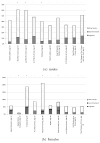The Economics and Psychology of Inequality and Human Development
- PMID: 20209045
- PMCID: PMC2832600
- DOI: 10.1162/jeea.2009.7.2-3.320
The Economics and Psychology of Inequality and Human Development
Abstract
Recent research on the economics of human development deepens understanding of the origins of inequality and excellence. It draws on and contributes to personality psychology and the psychology of human development. Inequalities in family environments and investments in children are substantial. They causally affect the development of capabilities. Both cognitive and noncognitive capabilities determine success in life but to varying degrees for different outcomes. An empirically determined technology of capability formation reveals that capabilities are self-productive and cross-fertilizing and can be enhanced by investment. Investments in capabilities are relatively more productive at some stages of a child's life cycle than others. Optimal child investment strategies differ depending on target outcomes of interest and on the nature of adversity in a child's early years. For some configurations of early disadvantage and for some desired outcomes, it is efficient to invest relatively more in the later years of childhood than in the early years.
Figures








References
-
- Abbring JH, Heckman JJ. Econometric evaluation of social programs, part III: Distributional treatment effects, dynamic treatment effects, dynamic discrete choice, and general equilibrium policy evaluation. In: Heckman J, Leamer E, editors. Handbook of Econometrics. 6B. Amsterdam: Elsevier; 2007. pp. 5145–5303.
-
- Aigner DJ, Hsiao C, Kapteyn A, Wansbeek T. Latent variable models in econometrics. In: Griliches Z, Intriligator MD, editors. Handbook of Econometrics. Vol. 2. Elsevier; 1984. pp. 1321–1393. Chapter 23.
-
- Auld MC, Sidhu N. Schooling, cognitive ability and health. Health Economics. 2005 October;14(10):1019–1034. - PubMed
-
- Barker DJP. Mothers, Babies and Health in Later Life. 2. Edinburgh: Churchill Livingstone; 1998.
-
- Becker GS. A Treatise on the Family (Enlarged ed.) Cambridge, MA: Harvard University Press; 1991.
Grants and funding
LinkOut - more resources
Full Text Sources
